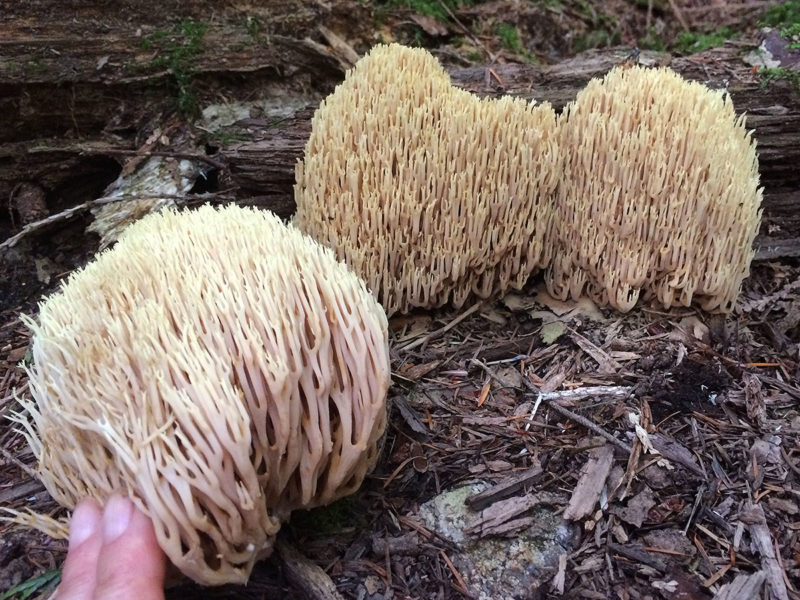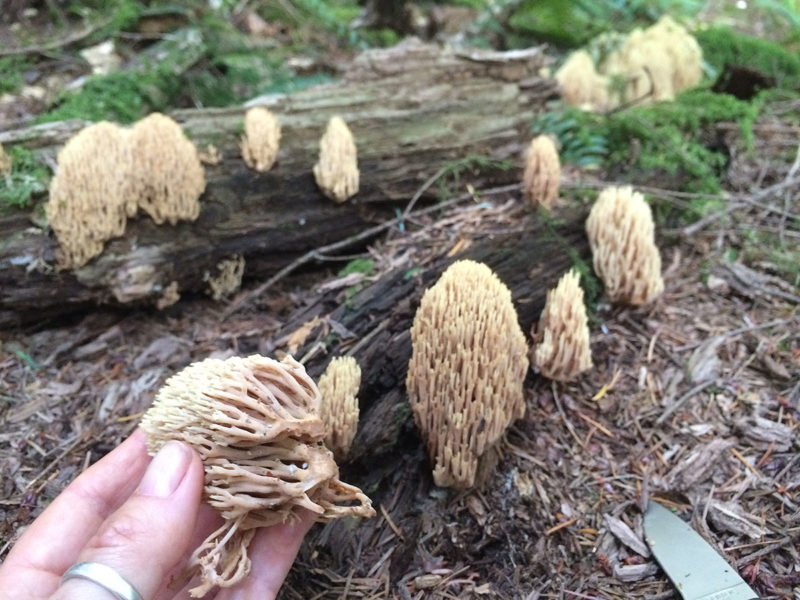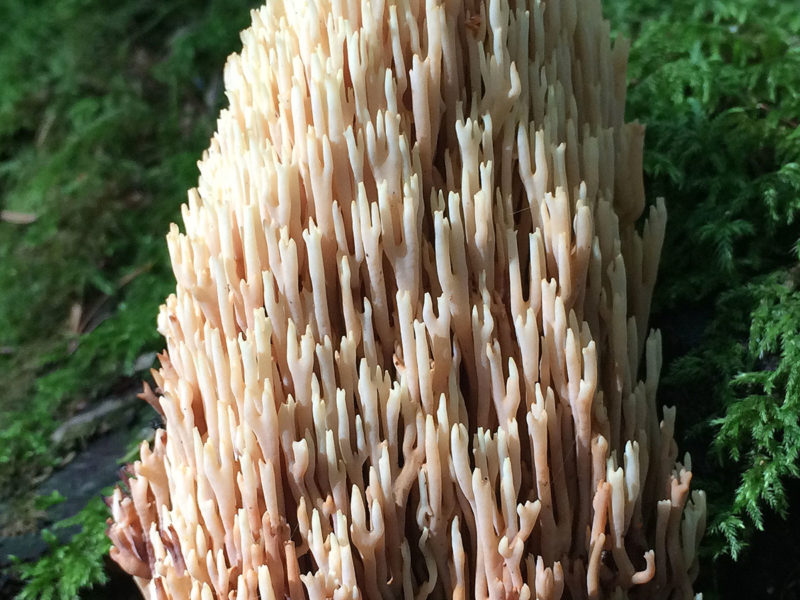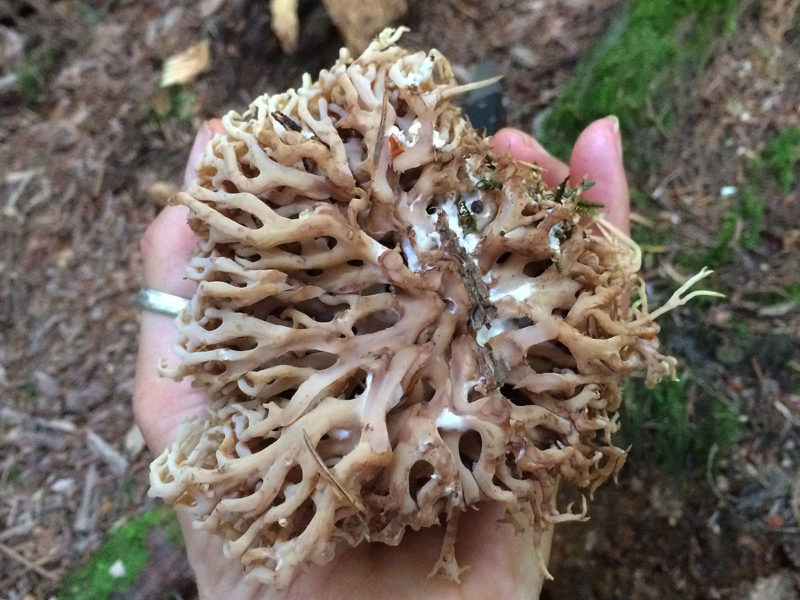Ramaria stricta.
The coral that kicked it off for Balfour and McDowell in their quest to really look at corals.

Funny in the photos the branches look so sturdy. When I got home from our hike I remembered them as hair-like, very thin. The mind, what tricks she plays – or is it just me? So now I always look at my photos first before trying to ID a mushroom. I mean hair-like branched coral mushroom came up with nothing like this in duck duck go.

But back to the story. We found many clusters of these just off B&K on Black Tower.

Corals are all about the tips. These are thorn-like. No crowns here. Who needs a crown anyway? Heavy is the head…

Don’t be afraid to pick and turn over a mushroom fruiting body. Remember that what you see is just the fruiting body and it’s job is to disperse spores. So picking the fruiting body of a mushroom that is ready to disperse spores is helping it. The main part of the mushroom is the mycelia that is usually hidden from view and continues to grow to put forth new fruiting bodies the next season and keep the life cycle spinning.
About Ramaria stricta
Ramaria stricta, commonly known as the strict-branch coral is a coral fungus of the genus Ramaria. It has a cosmopolitan distribution, and grows on dead wood, stumps, trunks, and branches of both deciduous and coniferous trees. Its fruit body is up to 10 cm (3.9 in) tall, made of multiple slender, compact, and vertical parallel branches. Its color is typically light tan to vinaceous-brown. All parts of the mushroom will bruise when handled. There are several lookalike corals that can usually be distinguished from R. stricta by differences in coloration, bruising reaction, or microscopic features. The fungus is inedible due to its unpleasant odor and bitter taste.
The fungus is lignicolous, common in late summer and fall inconiferous forests of the Pacific Coast and Rocky Mountains. The fungus grows on dead wood, stumps, trunks, and branches of both leafy and coniferous trees. The form that grows on deciduous wood tends to be more orange and less bushy than those which grow on coniferous wood. Fruit bodies can form in “log lines” where decaying wood is buried underground near the surface, or is in an advanced state of decomposition.
More information: Ramaria stricta: wikipedia